Fix: Windows Not Showing One or More Partitions
If you cannot find your hard disk partitions in File Explorer, several things can contribute to it. From unassigned partitions to free space in the hard disk, the reasons can vary from case to case. One of the most common cases in this regard is when you try to use a hard disk that uses the file system of Linux. This is because Windows cannot read file systems due to the lack of disk drivers.

This article will show you how to resolve the problem in question, so you can use your hard disk without any issues. Before we begin, we must go through the various causes of the issue in question.
This will give you a better understanding of the issue and help you in figuring out what might be the actual cause. With that in mind, let us get right into it without further ado.
- Unallocated volume — One of the reasons you may not be able to see a partition is when you do not have a partition but rather free space. This can often occur when you get a new hard drive. In such a scenario, you must create a volume over the free space to utilize it. Disk Management is a great utility for doing this.
- Missing Drive Letter — If your partitions do have a letter on your operating system, you will not be able to see them in File Explorer. Assigning a letter to your partition allows the operating system to access the volume, thus allowing you to use it.
- Malfunctioning Disk Drivers — Another cause behind missing partitions can be malfunctioning drives. As it turns out, Windows uses drivers to communicate with your hard disk; if the drivers are not working correctly, you will not be able to access or see them. If this case is applicable, you will have to reinstall the disk drivers.
- Disk corruption or partition table fragmentation — In some cases, a hard drive whose partition table has fragmented can also result in the issue in question. In addition, the corruption of your hard drive may also give rise to the problem. In these cases, you will have to format your drive in hopes of removing the corruption and creating a new partition table.
Now that we have gone through the possible causes of the issue, we can start diving into the various methods you can use to see the partitions again. So, without wasting further time, let us get right into it.
1. Create New Volume
If you install a new hard drive on your computer, there will be no partitions by default. This is because the hard drive does not have any partitions, and you will have to create them before using it. When you create volumes on the hard drive, only then will you be able to see them in the File Explorer window.
Hard drives do not come with pre-defined volumes, as users want to partition according to their needs. In addition, if you delete a volume on your hard drive, a new partition will not be created automatically. Creating volumes on your hard drive is straightforward.
To do this, you will be using the Disk Management utility, which, as evident from the name, allows you to manage the hard drives on your computer. To create a new volume on an empty space on the hard drive, follow the instructions down below:
- First, open up the Start Menu and search for Disk Management. Open it up.
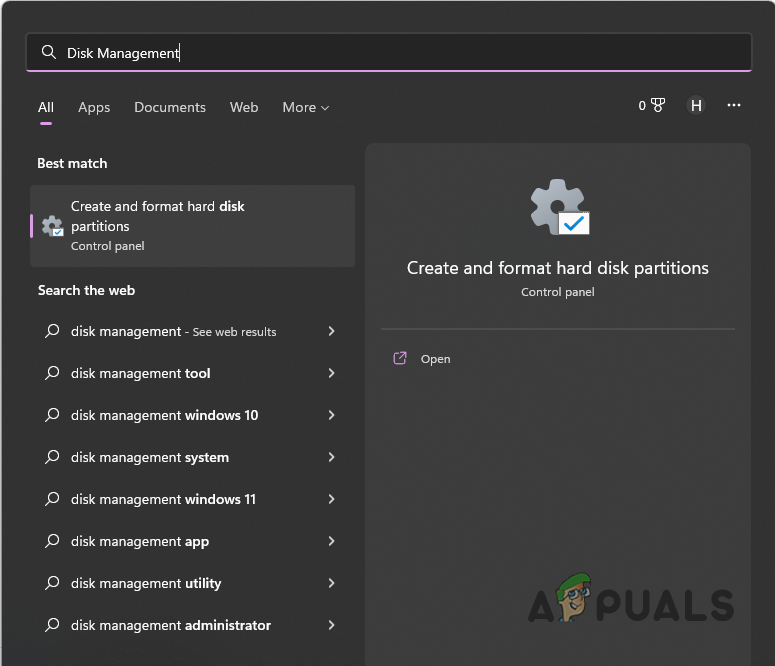
Opening Disk Management - Once the Disk Management window opens, you can see a visual representation of your drives and the partitions therein.
- At the bottom, next to your drive number, right-click on Unallocated space and choose New Simple Volume from the drop-down menu.

Creating New Simple Volume - On the follow-up screen, you will have to choose the size of the partition. Once you do that, click on the Next button.

Specifying Volume Size - After that, assign the partition a letter of your choice. Then, click Next again.

Assigning a Letter to Partition - Finally, you can choose to give the partition a name. You can also choose to change the format type but let it be NTFS.

Format Partitions - Once you do that, open up a File Explorer window, and you should be able to see the partition.
If there is no empty space in your hard drive, and you are missing an existing partition, move to the following method below.
2. Assign a Letter to Existing Partitions
Assigning a letter to your various partitions is vital as the letters are used when accessing a specific partition. Drive letters and paths are correlated. As it turns out, in some cases, your existing partition can lose its letter, resulting in the partition disappearing from the Windows File Explorer.
This is not something to worry about, as you will have to assign a drive letter, and it should be back without any issues.
If this case is applicable, you will have to use the Disk Management utility to assign a letter to your partition. Follow the instructions down below to do this:
- To start off, open up the Disk Management utility by searching for it in the Start Menu.

Opening Disk Management - In the Disk Management window, at the bottom, you will have to locate partitions that do not have a letter.
- Right-click on the volume and choose the Change Drive Letter and Paths option from the drop-down menu.

Changing Drive Letter - Since the partition is missing a letter, click the Add button to assign it a letter.
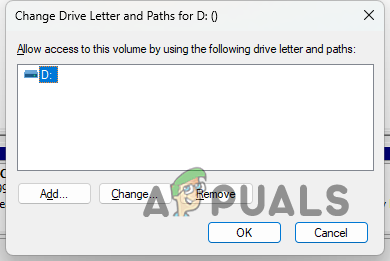
Adding New Drive Letter - Choose any letter and then click the OK button. Follow up by clicking OK again.
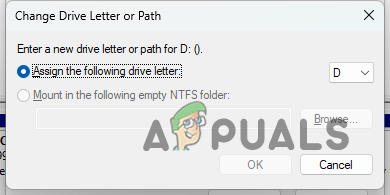
Assigning a New Drive Letter - Once you do that, open a File Explorer window to see if this fixes the issue.
If you do not have any partitions without letters, move to the next method.
3. Initialize Disk
Sometimes, when a drive you install does not show up in File Explorer, it may be because the drive is not initialized. As it turns out, initializing a drive makes it ready for use by Windows.
If you have used the drive elsewhere with data on it, we do not recommend initializing it. This is because when you initialize a drive, it erases all of the data on the drive, after which you can format it to create a new partition. If this case is applicable, we recommend installing it on a different PC or using a third-party recovery program to see if you can read the files.
With that out of the way, follow the instructions down below to initialize a drive:
- First of all, open up the Disk Management utility.

Opening Disk Management - On the Disk Management utility, locate your drive at the bottom.
- Right-click on the drive, and choose the Initialize Disk option from the drop-down menu.

Initialize Disk - A new dialog box will open up. Here, make sure you have selected the correct hard disk. Then, click the OK button to use the default partition style.
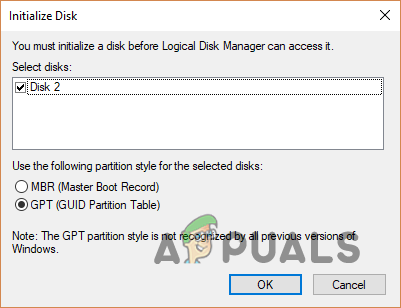
Initializing Disk
After initializing the drive, you still won’t be able to see it in File Explorer. This is because there are no partitions on the drive to show. You will have to create volumes on the drive to start using it. To do this, follow the instructions below:
- Right-click on the unallocated space next to the drive and choose New Simple Volume.

Creating New Simple Volume - Choose the size of the partition.

Specifying Volume Size - Follow this up by assigning the volume a letter and giving it a name.

Assigning a Letter to Partition - Once you do all that, the partition should now be showing up in the Windows File Explorer.
4. Reinstall Disk Drivers
All the hardware on your computer needs communication with the Windows operating system. Device drivers provide this communication bridge so that the hardware and software can work together.
In some cases, your disk drivers may malfunction and stop working correctly. This can sometimes happen when you install a Windows update or something similar. If this case is applicable, you will have to reinstall your disk drivers in an attempt to fix the issue. Follow the instructions down below to do this:
- First of all, open up the Device Manager by searching for it in the Start Menu.
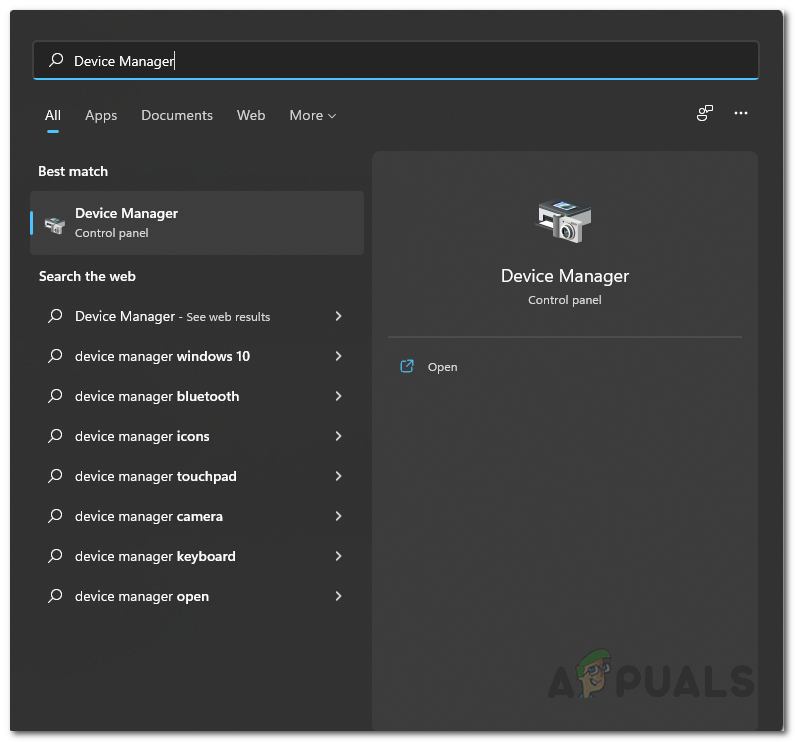
Opening Device Manager - On the Device Manager window, expand the Disk drives list.
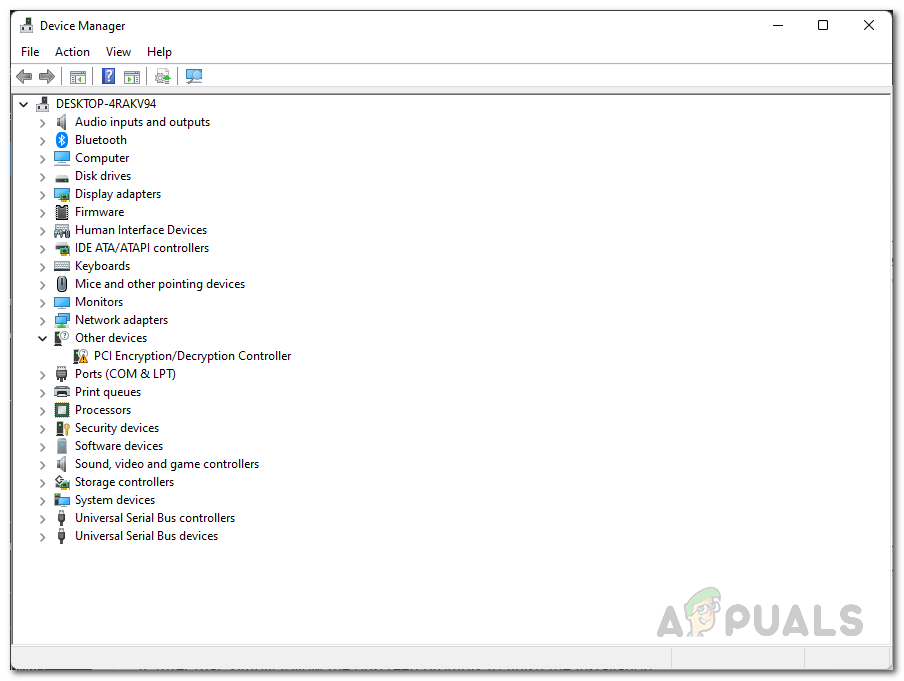
Device Manager - Right-click on your drive, and from the drop-down menu, choose the Uninstall device option.

Uninstalling Disk Driver - After doing that, restart your computer. Upon restart, Windows will automatically reinstall the drivers for you.
- See if that fixes the problem.
5. Delete Missing Volumes
Finally, if none of the above methods fixes the problem for you, and you are still unable to see the missing partitions in File Explorer, it is very likely the missing partition might be corrupted. When this happens, you will have to delete the existing volumes and then re-partition the hard drive.
If there is important data on the drive you do not want to use, you can try recovering any data from the hard disk. To delete volumes, follow the instructions down below:
- Open up the Disk Management utility from the Start Menu.

Opening Disk Management - Next to the faulty hard disk, right-click on the missing volume and choose Delete Volume from the drop-down menu.
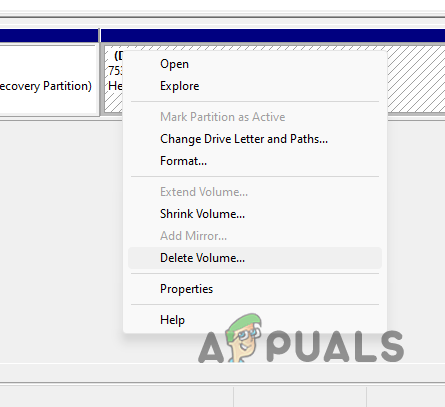
Deleting Volume - After you delete the volume, you can see unallocated space. Right-click on it and choose the New Simple Volume option.

Creating New Simple Volume - Follow the on-screen prompts to finish creating a new volume.
- Once you do that, check if the partition appears in File Explorer.




